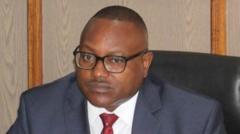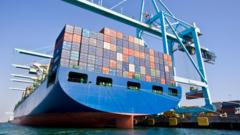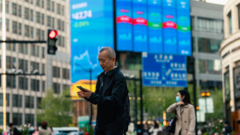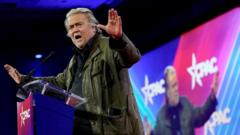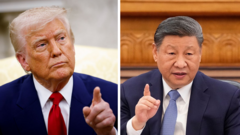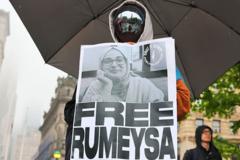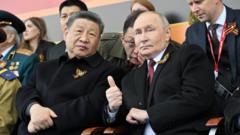In the wake of escalating trade disputes with the U.S., Prime Minister Mark Carney has strategically restructured his cabinet, infusing energy with 24 newcomers while retaining experienced former Trudeau officials.
Canada's Carney Reshapes Cabinet Amidst Trade Tensions with the US
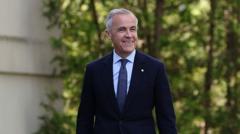
Canada's Carney Reshapes Cabinet Amidst Trade Tensions with the US
Prime Minister unveils a refreshed cabinet with a mix of old and new faces to tackle economic challenges.
Canadian Prime Minister Mark Carney has introduced a newly revamped cabinet aimed at addressing pressing economic issues, particularly in light of the ongoing trade tensions with the United States. The cabinet, comprised of 28 ministers and 10 secretaries of state, reflects both continuity and fresh perspectives, as Carney emphasized the need for "decisive action" on his economic agenda.
Two weeks post-election, Carney's reshuffle showcases a blend of seasoned political figures and first-time members. Notably, 24 new faces have joined the cabinet, including 13 first-time Members of Parliament (MPs). Returning to prominent positions are established players, such as Melanie Joly and Chrystia Freeland, while first-time ministers are appointed to critical areas such as housing, immigration, and energy—sectors where Trudeau's administration faced significant scrutiny.
Carney has pledged to maintain gender parity within his cabinet, a practice initiated by his predecessor. The new foreign minister, Anita Anand, is expected to play a pivotal role in navigating the vital relationship with the US, especially following Carney's recent discussions with President Trump over renegotiating trade agreements. Meanwhile, Dominic LeBlanc has shifted focus to Canada-US trade and internal trade barriers, fulfilling a key campaign promise.
Other notable reshuffles include Toronto MP Maninder Sidhu taking the reins of international trade, with Melanie Joly moving to oversee the industry portfolio. Gary Anandasangaree has stepped into the role of public safety, while David McGuinty transitions to lead the defense sector.
While some established figures have left the cabinet—such as former defense minister Bill Blair—new initiatives are reflective of Carney’s broader ambitions to stimulate economic growth and address regional and ethnic diversity across Canada’s landscape. This diversity is represented in the new cabinet, which includes ministers from various provinces as discussions about western alienation persist.
Emerging with significant responsibilities are Evan Solomon, appointed as minister of artificial intelligence and digital innovation, and Julie Dabrusin, who becomes environment minister after previously serving as parliamentary secretary. Halifax MP Lena Metlege Diab has also joined the team as minister for immigration. Former Vancouver mayor Gregor Robertson takes charge of the housing crisis, a central issue for many Canadians amid rising affordability challenges.
Despite this fresh lineup, opposition leader Pierre Poilievre criticized Carney for retaining many ministers from the previous Trudeau cabinet, arguing that it falls short of the change Caribbean promised. As Carney's government moves forward, all eyes will be on how these strategic appointments navigate the turbulent waters of trade relations and domestic challenges.



